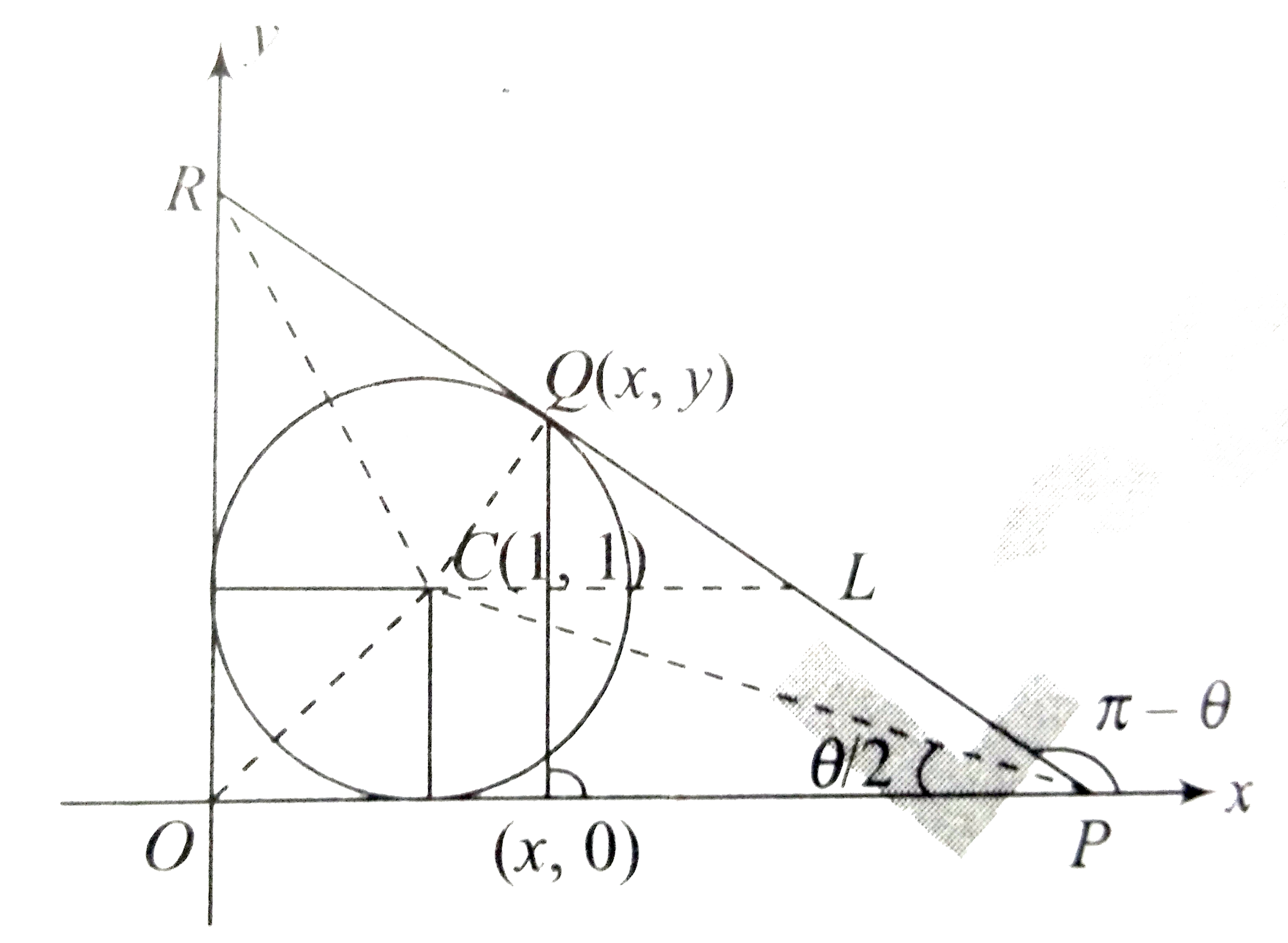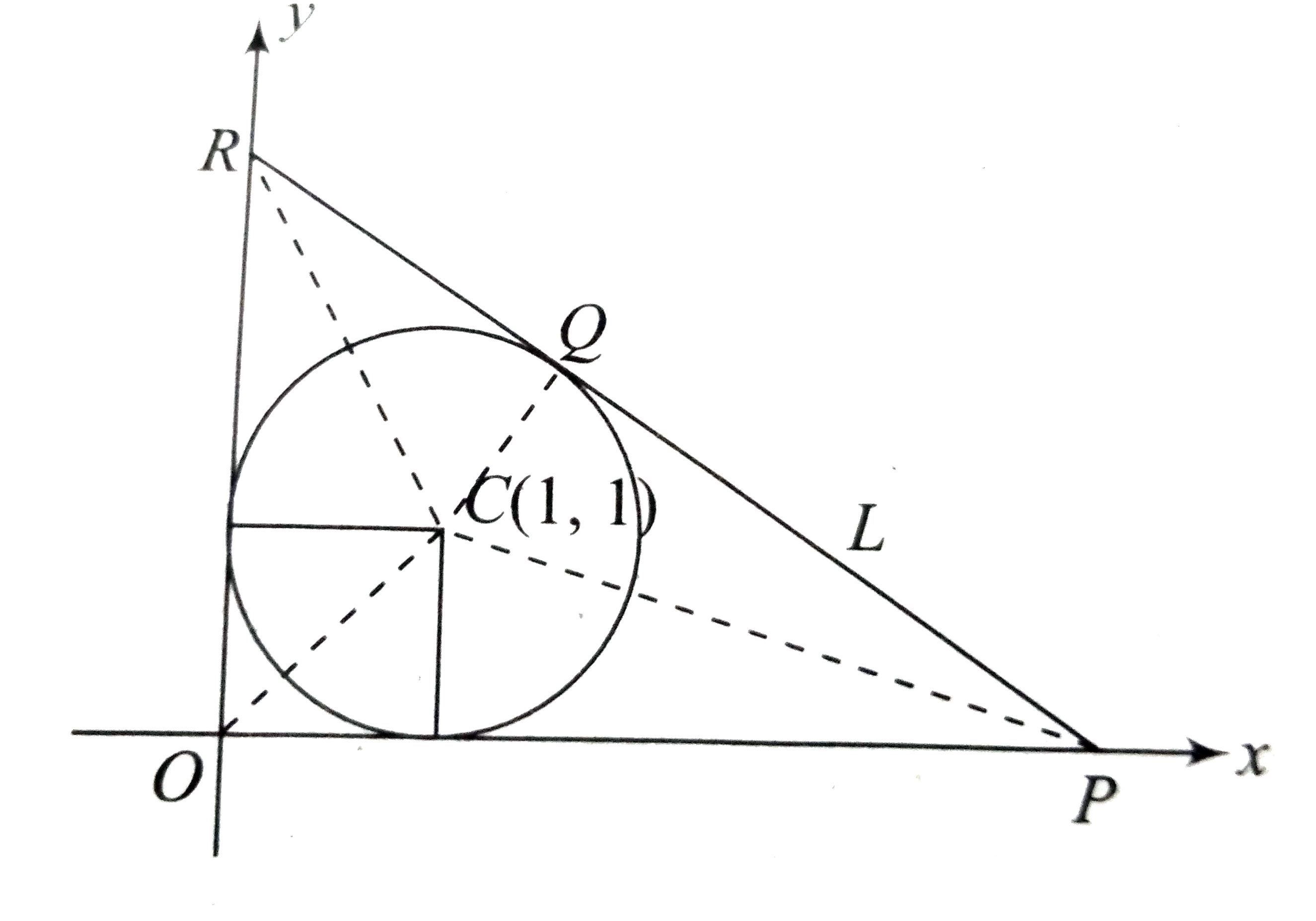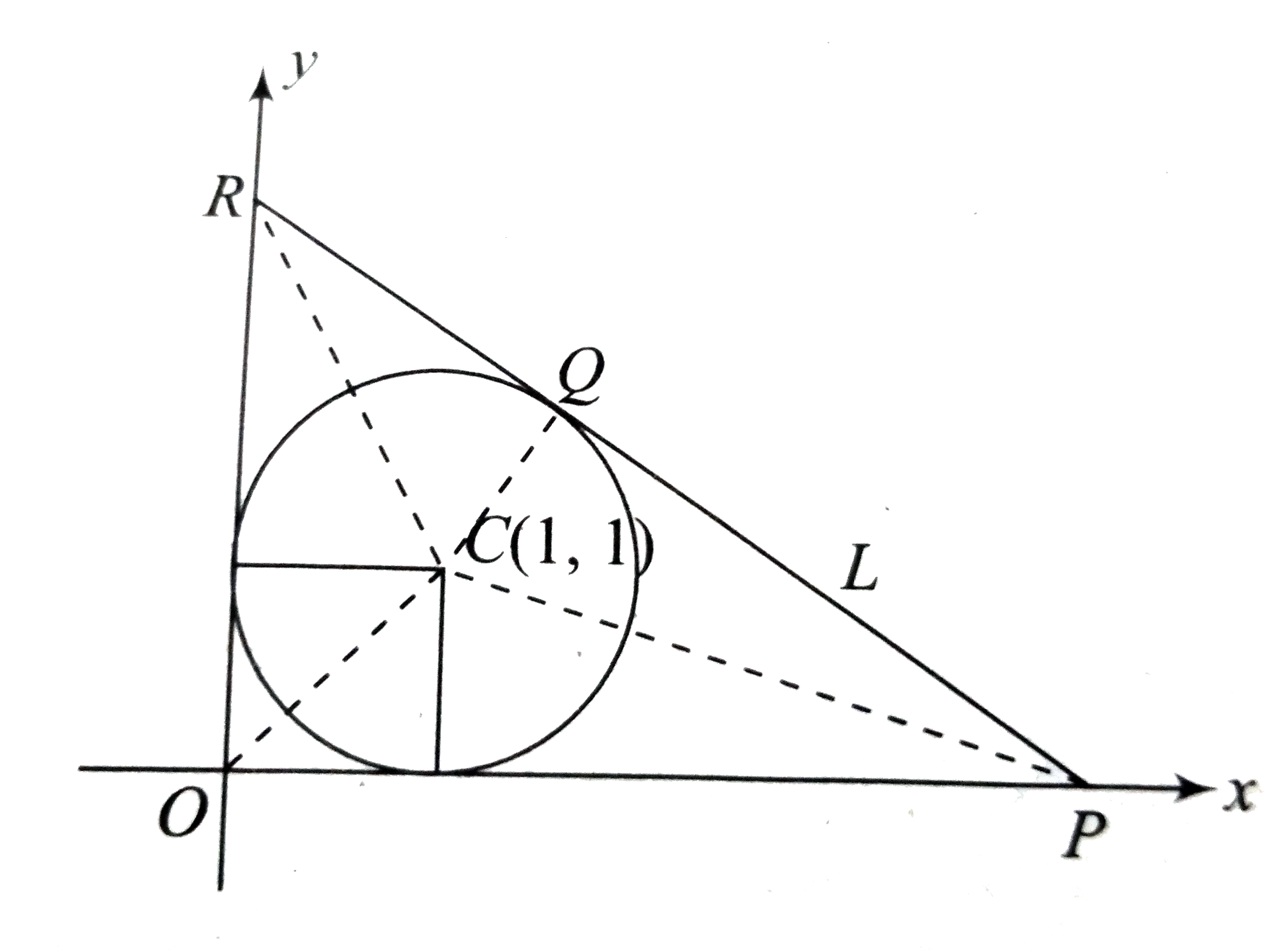In the diagram as shown, a circle is drawn with centre C(1, 1) and radius I and a line L. The line Lis tangential to the circle at Q. Further L meet the y-axis at R and the x-axis at Pis such a way that the angle OPQ equals θ where 0<θ<π2 The coordinates of Q are
(1+cosθ,1+sinθ)
(sinθ,cosθ)
(1+sinθ,cosθ)
(1+sinθ,1+cosθ)
The correct Answer is:D

For the circle with center C, using parametric form at straight line, we get
x−1=sinθ
y−1=cosθ
Thus, Q≡(1+sinθ,1+cosθ)
Topper's Solved these Questions
- CIRCLESBOOK - CENGAGECHAPTER - CIRCLESEXERCISE - Single Correct Answer Type
58 Videos
- CIRCLESBOOK - CENGAGECHAPTER - CIRCLESEXERCISE - Question Bank
32 Videos
- CIRCLESBOOK - CENGAGECHAPTER - CIRCLESEXERCISE - Question Bank
32 Videos
- CIRCLE BOOK - CENGAGECHAPTER - CIRCLE EXERCISE - JEE Advanced (Single Correct Answer Type)
14 Videos
- COMPLEX NUMBERSBOOK - CENGAGECHAPTER - COMPLEX NUMBERSEXERCISE - Question Bank
30 Videos
Similar Questions
Knowledge Check

In the diagram as shown, a circle is drawn with centre C(1,1) and radius 1 and a line L. The line L is tangent to the circle at Q. Further L meets the y-axis at R and the x-axis at P in such a way that the angle OPQ equals θ where 0<θ<π2.
Area of triangle OPR when θ=π/4 isA(3−2√2)B(3+2√2)C(6+4√2)Dnone of these
In the diagram as shown, a circle is drawn with centre C(1,1) and radius 1 and a line L. The line L is tangent to the circle at Q. Further L meets the y-axis at R and the x-axis at P in such a way that the angle OPQ equals θ where 0<θ<π2.
Equation of the line PR isAxcosθ+ysinθ=sinθ+cosθ+1Bxsinθ+ycosθ=cosθ+sinθ−1Cxsinθ+ycosθ=cosθ+sinθ+1Dxtanθ+y=1+cot(θ2)The line 2x−y+1=0 is tangent to the circle at the point (2, 5) and the centre of the circle lies on x−2y=4. The square of the radius of the circle is
A45B75C20D50
The line 2x - y + 1 = 0 is tangent to the circle at the point (2,5) and the centre of the circles lies on x-2y = 4. The radius of the circle is :
View SolutionThe line l in Fig14.14 meets X-axis at A(-5,0) and Y-axis at B(0,-3).
View SolutionThe line y=mx+c will be a normal to the circle with radius r and centre at (a,b) if
View SolutionA circle is drawn whose centre is on the x - axis and it touches the y - axis. If no part of the circle lies outside the parabola y2=8x, then the maximum possible radius of the circle is
View SolutionCircle with centre C (1, 1) passes through the origin and intersects the x-axis at A and y-axis at B. The area of the part of the circle that lies in the first quadrant is
View Solution
